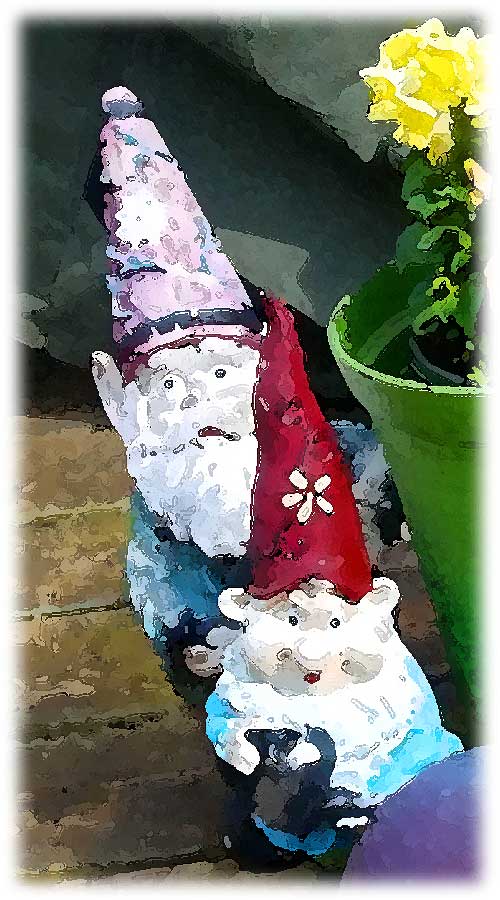
By Linda Wiggen Kraft
There’s more than meets the eye to the small round faced bearded garden gnomes who sport pointed red hats and mischievous smiles. Garden gnomes come from the land of enchantment and have been found in myth and folklore throughout the ages.
The first written and named description of gnomes came at the end of the Renaissance in the late 1500s when Paracelsus, who was a physician, philosopher and alchemist, wrote about the ethereal nature spirits who guide and guard each of the four elements.
Paracelsus described gnomes as nature spirits of the earth element. They, like fairies, are made of subtle ethereal invisible matter only seen by a few. Children are often able to see these invisible realms with “seeing” eyes and hearts. Most adults cannot see into these realms.
Although there are various sizes of gnomes in this invisible world, the most common are like those depicted in the physical form of garden gnomes. They are usually pudgy mischievous little creatures twelve to eighteen inches tall, with long white beards wearing tall red pointed hats. Gnomes were, and still are, seen as helpers around the farms and gardens. Gnomes work with the mineral world not only guarding gold and gems, but also providing the minerals to plants to enliven their colors and health. Gnomes work and travel through the earth as easily as humans walk through air. They are often depicted as miners, like the seven dwarfs in Snow White but their work doesn’t require digging into the earth.
The garden gnomes as we know them began to be made of wood or porcelain in the 1700s in Switzerland and Germany. In the mid 1800s an Englishman, Sir Charles Isham, brought 21 to his British estate and placed them around his grounds. Thus began the British love, and sometimes hate, of garden gnomes. Once World War I started the popularity of German gnomes plummeted. It wasn’t until Disney’s Snow White and the Seven Dwarfs of 1937 did garden gnomes again achieve popular status. After World War II and into the 1970s garden gnomes again gained a popularity that survives to this day.
Garden gnomes have not been without controversy. As garden gnomes became part of everyday culture and seen in gardens of rich and poor, they became “tacky” and in “bad” taste according to some. The most prestigious garden event in the world is the Chelsea Flower Show held in London each spring since 1862. Starting in 1990, and still to this day, garden gnomes are banned from being in the gardens created for the show because they are not of the high prestige the show requires, whatever that means. There are groups of people who feel garden gnomes should be liberated from gardens and taken to forests, which these groups feel are the real homes of gnomes. Most liberation groups are in Europe. There is even a sanctuary for gnomes in Italy.
Many gardens throughout the Western world are homes to garden gnomes. All garden gnomes deserve to be loved and admired. Whether “high class” or “tacky” these gnomes remind us of their good luck and the work these nature spirits do in the garden to bring about the beauty of the plants and the joy of gardens.
Linda Wiggen Kraft is a landscape designer who creates holistic and organic gardens. She guides others to connect deeply with nature through nature journeys-forest bathing. She is also a mandala artist and creativity workshop leader. Her website and blog are at www.CreativityForTheSoul.com. Her phone is 314-504-4266.


